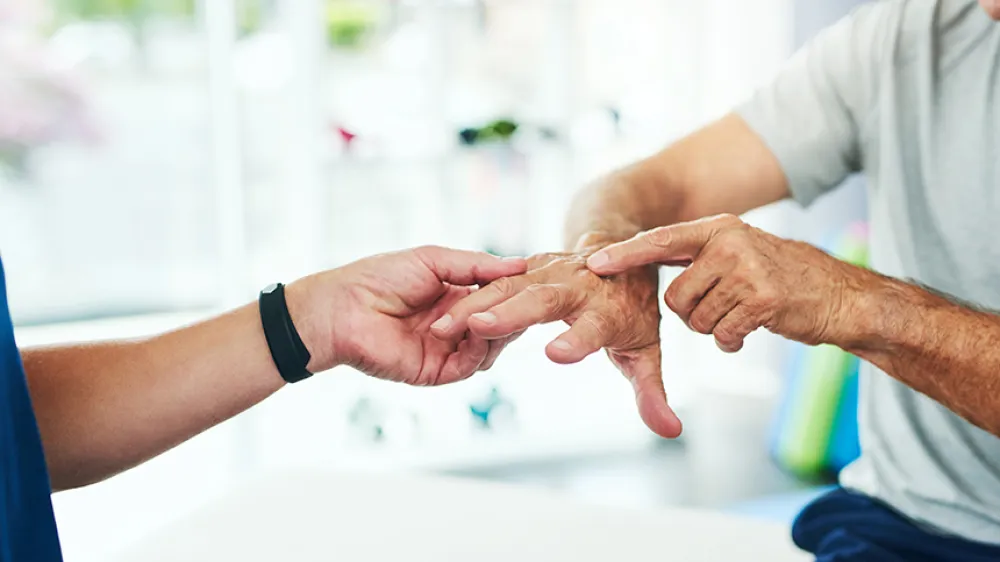Providing your location allows us to show you nearby locations and doctors.
Can physical therapy help arthritis?

04/27/2023
Physical therapy can help reduce pain, stiffness and fatigue caused by arthritis
By Stacie McLaughlin, Physical Therapy Supervisor, Nuvance HealthAre you or someone you know living with arthritis? The chances are probably yes because arthritis is very common. Arthritis is inflammation of the joints that worsens with age. Arthritis can occur throughout the body, including the lower back, hands, hips, knees and feet.
There are different ways to manage arthritis, including physical therapy (PT). The goal of PT for arthritis is to reduce pain, stiffness and fatigue and improve motion, endurance and stamina. PT can also improve coordination and balance as well as reduce the progression of arthritic changes.
Here is how PT can help you manage problems caused by arthritis.
Request an appointment with a licensed physical therapist near me.
Problems caused by arthritis
There are two types of arthritis that can affect your ability to participate in daily activities: Osteoarthritis and rheumatoid arthritis. With both, you may experience:
- Pain
- Loss of mobility in a single or multiple joints
- Increased swelling, stiffness, inflammation and tenderness
- Impaired walking, climbing stairs and doing household tasks
- Decreased desire to move the joint
- Muscle loss
A physical therapist will work with you to prevent these problems or prevent them from becoming worse.
Learn more about physical therapy at Nuvance Health.
Physical therapy for arthritis can improve mobility and reduce stiffness
Joints need to be bathed in synovial fluid to move smoothly and the muscles surrounding those joints need to be flexible and strong to work optimally. This is where a physical therapist can help. To improve joint mobility, physical therapists:
- Work on movement patterns to reduce the stress placed on joints and the spine
- Provide soft tissue techniques to reduce pain
- Instruct in exercises and activity modification to improve body mechanics
- Identify and address any changes in gait or posture due to arthritis
Physical therapy is often utilized in conjunction with other treatments such as medications, supplements and topical treatments to assist in reducing the inflammatory process that the body is going through.
What to expect at a physical therapy appointment
During your initial PT visit, a therapist will evaluate your posture, strength, range of motion and balance. They will also evaluate how your body moves when you do daily activities. They will determine if there are muscle imbalances that could be aggravating your arthritic symptoms.
During PT, you may perform exercises that strengthen your muscles and improve your posture. Exercises may include the use of equipment like an exercise bike, rower, treadmill or elliptical as well as weight-training exercises. A therapist may suggest you use an assistive device or make home modifications to help you perform certain tasks.
Physical therapists also use manual techniques to reduce tightness and spasms, which could aggravate the forces placed on a particular joint. Manual techniques can also reduce the pain cycle by improving the flow of good nutrients to the affected area and assist in flushing out impurities and swelling. Studies have found that PT with manual techniques is more effective in reducing pain from knee osteoarthritis than intraarticular steroid injections.
The bottom line: If you think physical therapy could help you ease some of your arthritic pain, speak with your primary care doctor for a referral and schedule an appointment.
Book Now with a Primary Care Provider
Stacie McLaughlin is a physical therapist and supervisor at Nuvance Health’s Western Connecticut Home Care. She also worked in an orthopedic outpatient setting for more than 25 years, with a specialty in biomechanical foot orthotics and gait dynamics.